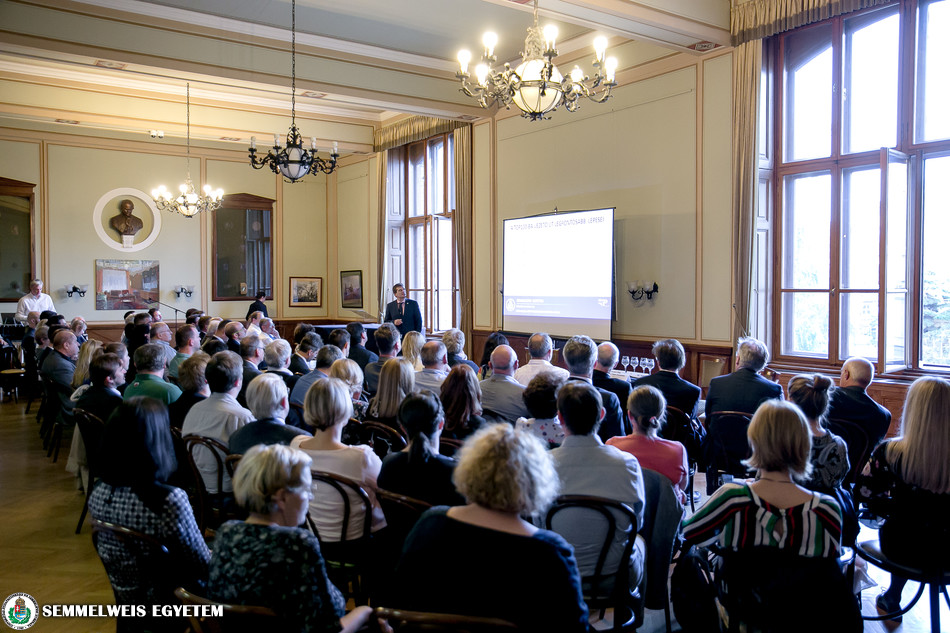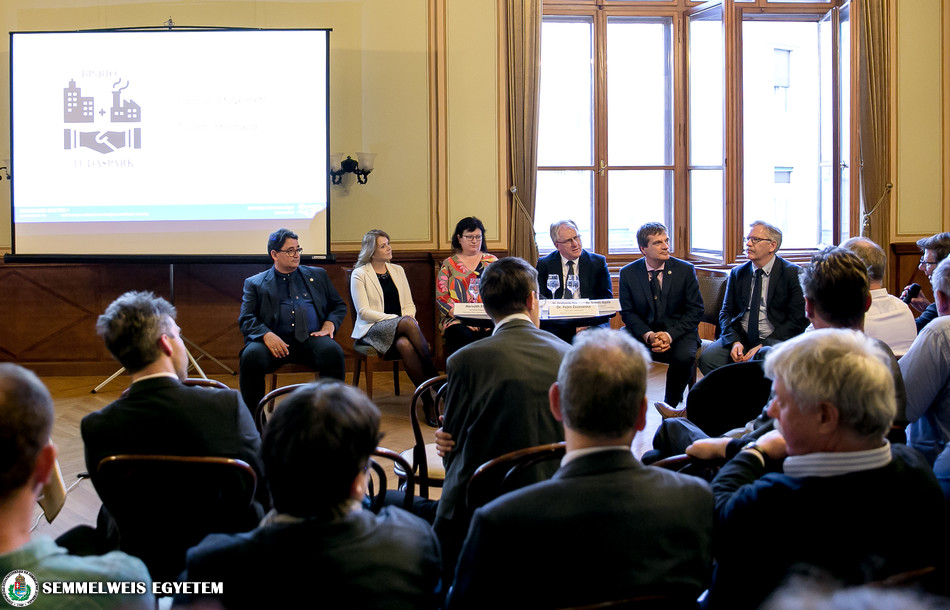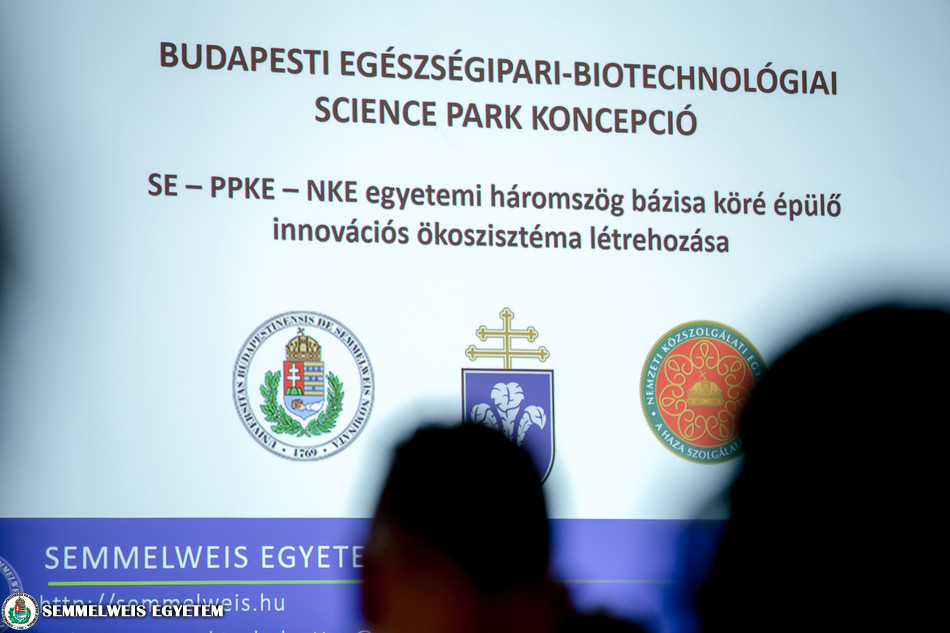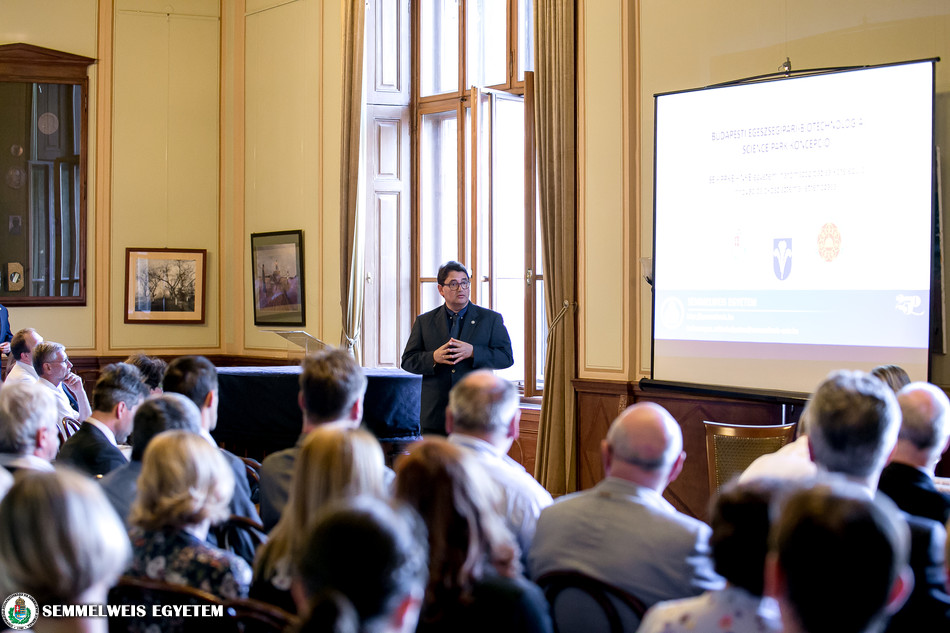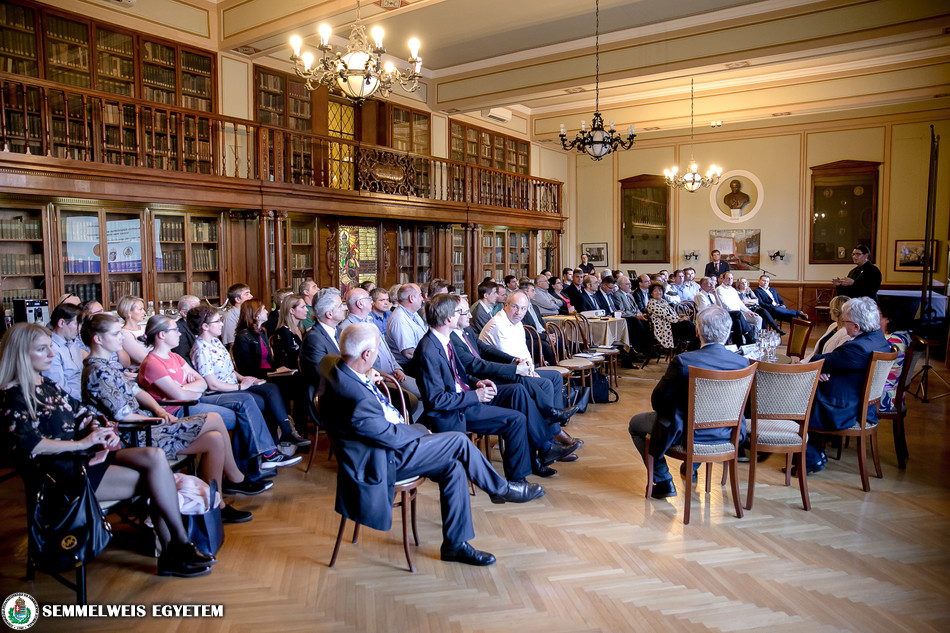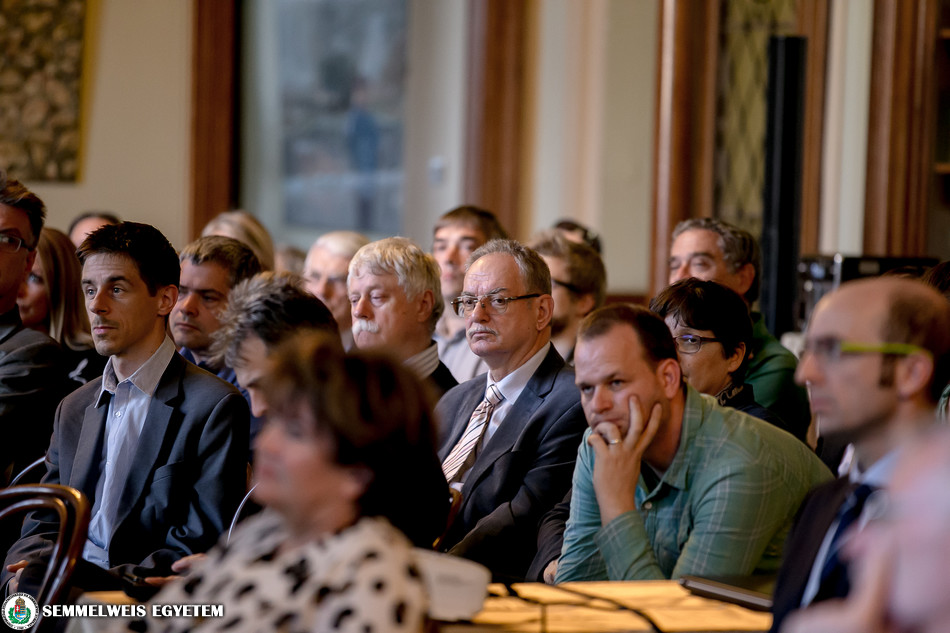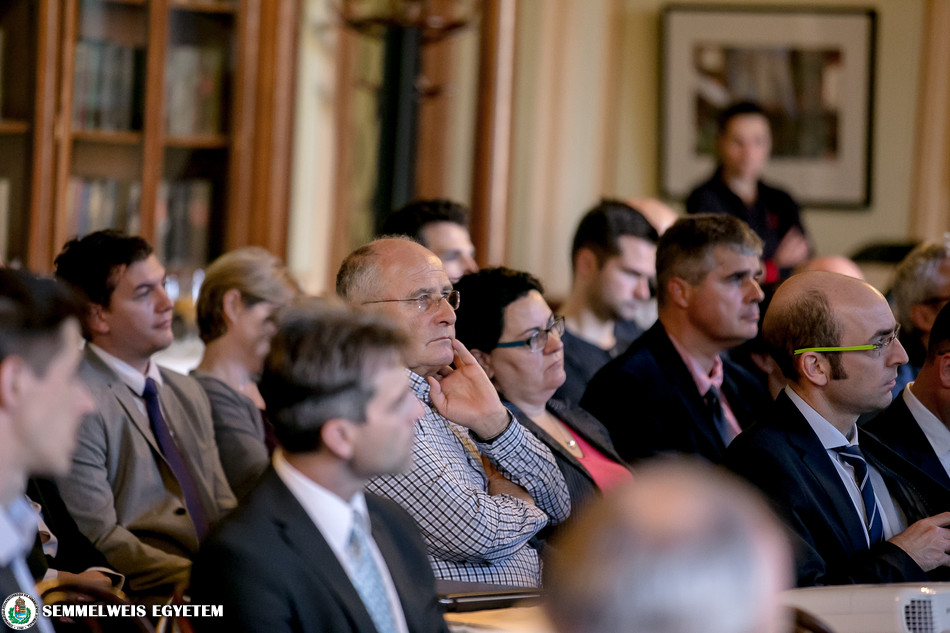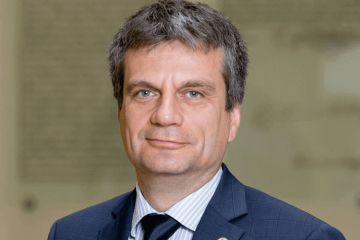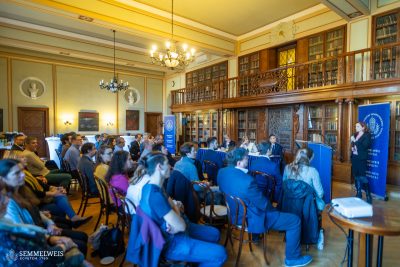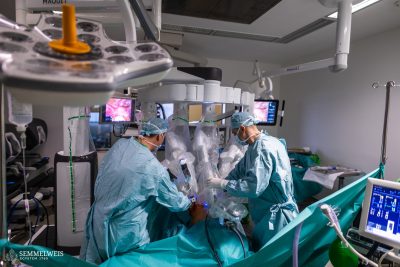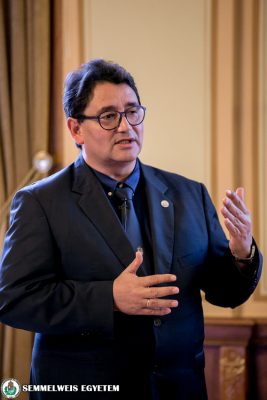 “We created the concept of the Science Park to make a significant leap and introduce a revolutionary new way of thinking to Semmelweis University with partners that complement our knowledge, for example in informatics or bionics,” said rector Dr. Béla Merkely at the event held in the Semmelweis Salon, where the plans for the research-development activity and services of the park were presented. The rector noted that Semmelweis University is already a high-prestige institution in the Central and Eastern Europe region today, with excellent performance in education and scientific output. However, the university is capable of even more than this, the rector said, adding that citations of the academic work being conducted here is exceptionally high, which means that highly valuable work is being done, with only a slight change in attitude necessary. When discussing the future of Semmelweis University, the positive international examples of e.g. Harvard, Oxford, Heidelberg or the University of Basel should be considered, where revenues from innovation and research exceed those from education. In placing the university on a path of upward development, the rector emphasized the significance of the ongoing curriculum reform, which supports creating opportunities for young people. “Most new ideas and capacities are in young people; education should be presented in a way so that students can build their own ideas on what they learned, and move forward from there,” he stressed.
“We created the concept of the Science Park to make a significant leap and introduce a revolutionary new way of thinking to Semmelweis University with partners that complement our knowledge, for example in informatics or bionics,” said rector Dr. Béla Merkely at the event held in the Semmelweis Salon, where the plans for the research-development activity and services of the park were presented. The rector noted that Semmelweis University is already a high-prestige institution in the Central and Eastern Europe region today, with excellent performance in education and scientific output. However, the university is capable of even more than this, the rector said, adding that citations of the academic work being conducted here is exceptionally high, which means that highly valuable work is being done, with only a slight change in attitude necessary. When discussing the future of Semmelweis University, the positive international examples of e.g. Harvard, Oxford, Heidelberg or the University of Basel should be considered, where revenues from innovation and research exceed those from education. In placing the university on a path of upward development, the rector emphasized the significance of the ongoing curriculum reform, which supports creating opportunities for young people. “Most new ideas and capacities are in young people; education should be presented in a way so that students can build their own ideas on what they learned, and move forward from there,” he stressed.
“We also have to change our thinking so that before we publish an article in a high-prestige paper, we should examine the innovation value of the discovery, whether it can compete in the fast-developing health industry marketplace, and whether it is necessary to launch an industrial patenting process,” said rector Merkely. He emphasized that the objective of the event is thinking jointly about the Science Park, as it is being created for the university’s researchers and will only be worth something “if we can make it out own and make use of it every hour of every day.”
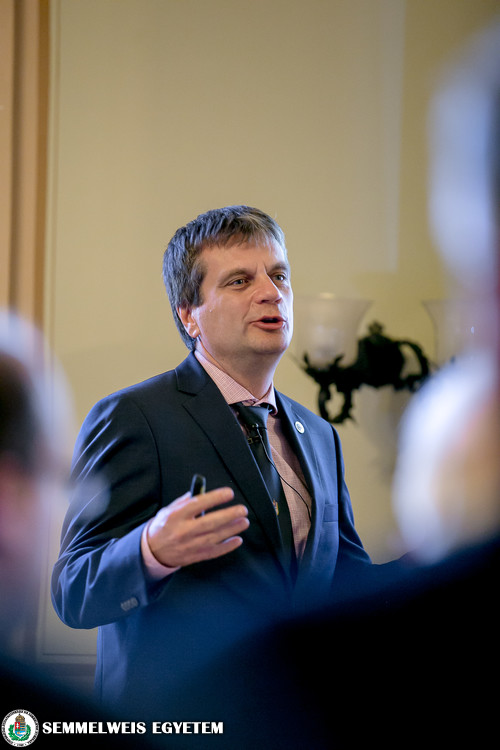 The Science Park is the culmination of the university’s new research-development and innovation strategy, declared Dr. Péter Ferdinandy, vice-rector for science and innovation. He stressed that they welcome ideas and projects from every researcher, since this will be an inclusive center where everyone can realize their own innovation dreams. He pointed out that the innovation ecosystem and the Science Park itself are built on the foundations of three universities: the letter of intent on creating the project was signed in March by Semmelweis University, the Pázmány Péter Catholic University and the National University of Public Service. The vice-rector also noted that the most important step on the road to becoming a Top 100 university is increasing R&D output and the international recognition and visibility of the university’s achievements. The project’s concept is in line with the government’s R&D goals and strategic objectives, while the university will also channel its existing resources and funds it applies for into the Science Park concept, he noted. The vision is to create a health industry knowledge park where industry (primarily small and medium-sized businesses) and university researchers can interact, and where researchers themselves can develop their innovations to a level where they can be adapted for use in industry. The main factor when selecting research groups to accept to the facility will be excellence, future-oriented technologies and industrial sustainability, he said. “We wish to create a service and management-focused ecosystem, and that is the strategy along which the Directorate of Innovation has been restructured,” he noted, introducing Dr. Péter Gyula Szigeti, the head of the directorate.
The Science Park is the culmination of the university’s new research-development and innovation strategy, declared Dr. Péter Ferdinandy, vice-rector for science and innovation. He stressed that they welcome ideas and projects from every researcher, since this will be an inclusive center where everyone can realize their own innovation dreams. He pointed out that the innovation ecosystem and the Science Park itself are built on the foundations of three universities: the letter of intent on creating the project was signed in March by Semmelweis University, the Pázmány Péter Catholic University and the National University of Public Service. The vice-rector also noted that the most important step on the road to becoming a Top 100 university is increasing R&D output and the international recognition and visibility of the university’s achievements. The project’s concept is in line with the government’s R&D goals and strategic objectives, while the university will also channel its existing resources and funds it applies for into the Science Park concept, he noted. The vision is to create a health industry knowledge park where industry (primarily small and medium-sized businesses) and university researchers can interact, and where researchers themselves can develop their innovations to a level where they can be adapted for use in industry. The main factor when selecting research groups to accept to the facility will be excellence, future-oriented technologies and industrial sustainability, he said. “We wish to create a service and management-focused ecosystem, and that is the strategy along which the Directorate of Innovation has been restructured,” he noted, introducing Dr. Péter Gyula Szigeti, the head of the directorate.
 Regarding the planned construction of the Science Park, Dr. Szigeti said one of its central units would be the innovation center and incubator building, dealing with knowledge transfer, shifting basic and applied research in the direction of innovation. This is where startup and spin-off processes would be incubated, and where the university’s research units would get involved. The other central unit would involve space rented to businesses taking part in the life of the knowledge park. Joining the Science Park in a professional capacity would also be the Hőgyes–Schöpf-Merei Pharmaceutical Research Center that is now under development, as well as a Translational Medical Technology Center, an animal house and a facility in charge of procurement. Dr. Szigeti said they have also identified 4+1 future directions for investments, which are imaging, bionics, big data, digital biomarkers, and translational biotechnology, with an artificial intelligence element connected to all of them. The legal and ethical frameworks for these new areas have not been developed yet, with partner universities expected to contribute to this, he noted. 5+1 core facilities have also been named whose foundations are either already available in part at the university or should be established. These are the medical imaging center, the center for regenerative medicine, cell and tissue therapy, the immunotherapy center, the competency center for artificial intelligence, virtual and augmented reality, the digital health care competency center, and the animal house, which would form the basis of the entire project.
Regarding the planned construction of the Science Park, Dr. Szigeti said one of its central units would be the innovation center and incubator building, dealing with knowledge transfer, shifting basic and applied research in the direction of innovation. This is where startup and spin-off processes would be incubated, and where the university’s research units would get involved. The other central unit would involve space rented to businesses taking part in the life of the knowledge park. Joining the Science Park in a professional capacity would also be the Hőgyes–Schöpf-Merei Pharmaceutical Research Center that is now under development, as well as a Translational Medical Technology Center, an animal house and a facility in charge of procurement. Dr. Szigeti said they have also identified 4+1 future directions for investments, which are imaging, bionics, big data, digital biomarkers, and translational biotechnology, with an artificial intelligence element connected to all of them. The legal and ethical frameworks for these new areas have not been developed yet, with partner universities expected to contribute to this, he noted. 5+1 core facilities have also been named whose foundations are either already available in part at the university or should be established. These are the medical imaging center, the center for regenerative medicine, cell and tissue therapy, the immunotherapy center, the competency center for artificial intelligence, virtual and augmented reality, the digital health care competency center, and the animal house, which would form the basis of the entire project.
With regard to the planned schedule, he said the preparation of the construction and feasibility plans, laying the foundation for the central service units, and the development of a unified operating and regulatory framework in management is already underway. Plans are to start the first phase of construction in 2020, with the Science Park to be completed and start operations likely in 2022.
Summarizing the benefits of the Science Park, Dr. Ferdinandy noted increased revenues (e.g. from, rent, service fees, hourly fees for core facilities), higher international visibility, promoting the use of the university’s intellectual property, better use of research potential, helping students find jobs in newly developing sectors, and working out education thematics in line with real market demand. For researchers, it will help build relations with the private sector, improve access to funds, new technologies and core facilities, help them use innovation management services and support the starting of spin-off companies. In terms of the latter, the goal is to have around 100 such companies in the university’s orbit.
Participating at the event on behalf of partner institutions was Dr. Zsuzsanna Fejes, the head of the development office of the National University of Public Service, Dr. Csaba Szilágyi, vice-rector of Pázmány Péter Catholic University (PPCU), and Etelka Horváth, chief financial director of PPCU.
Pálma Dobozi
Translation: Tamás Deme
Photo: Attila Kovács – Semmelweis University
